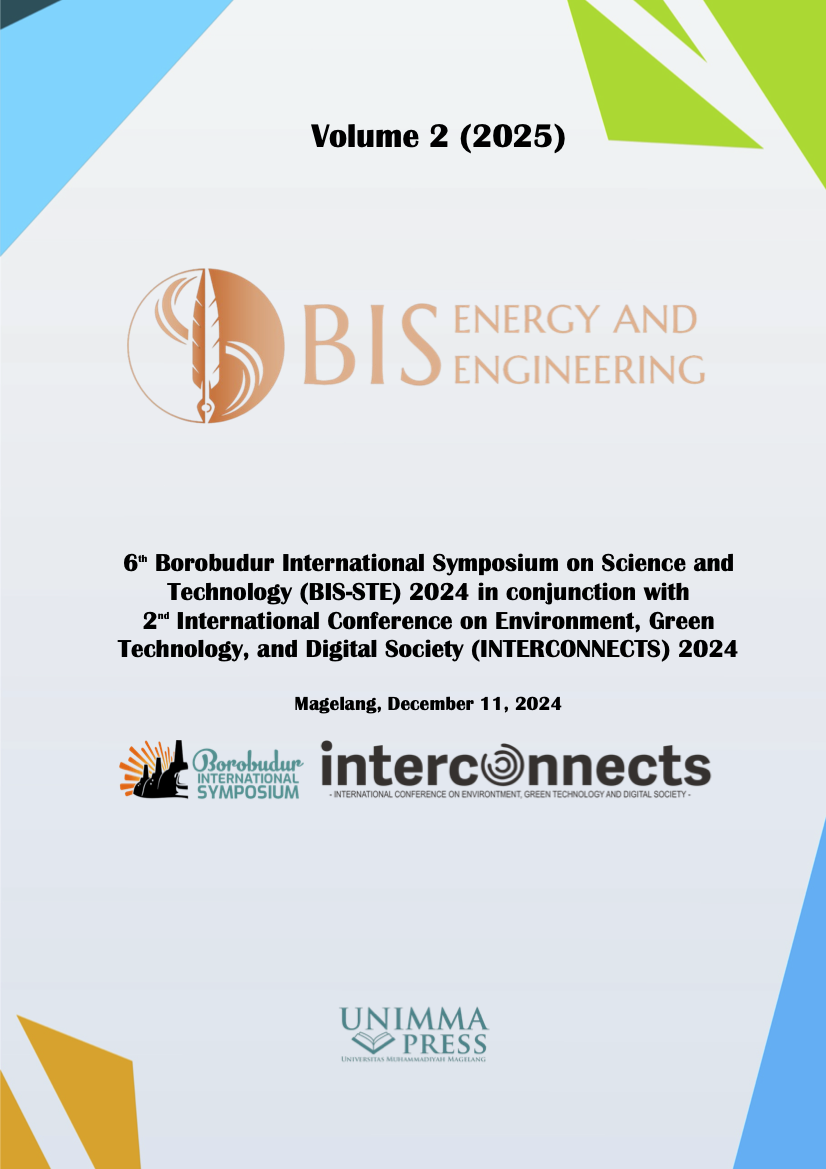Assessing the efficacy of contraflow strategies and ripple effects on peripheral road network performance: Insights from Brigjen Sudiarto Road, Semarang
Keywords:
Contraflow strategies, Ripple effect, Peripheral road network performanceAbstract
Traffic congestion is a significant challenge in Semarang, Indonesia, a rapidly urbanizing metropolitan area. To address this issue, a contraflow strategy was implemented on Brigjen Sudiarto Road, aiming to alleviate congestion and enhance traffic efficiency. The assessment of the contraflow system's effectiveness utilized the Indonesian Highway Capacity Manual (PKJI). Data were obtained through direct observation and secondary sources, focusing on traffic volume, road capacity, and level of service (LOS) comparisons before and after implementation. Findings revealed a 75% reduction in westbound traffic saturation, attributed to adding one lane, while eastbound congestion increased slightly due to lane reduction. The analysis also highlighted the contraflow’s impact on surrounding roads, such as Soekarno Hatta and Supriyadi Streets, which serve as alternative routes during peak hours. Simulations indicated that the contraflow system improves flow efficiency and travel time, especially during morning and evening rush hours. This evaluation underscores the potential of contraflow strategies as practical interventions for managing urban traffic, providing insights for cities facing similar challenges globally.
References
[1] Jon. Shaw, and Iain. Docherty, Transport Matters (Policy Press, 2019).
[2] R. Armen Dintar, Analisis Tingkat Pelayanan Jalan Pada Ruas Jalan Mt. Haryono Kota Semarang, Universitas Diponegoro, 2022.
[3] S. Tsigdinos, “Examining the impact of different street classification scenarios on active transportation equity. Insights from Athens, Greece,” Journal of Regional and City Planning 35(1), 1–20 (2024).
[4] R. Ahmad, and A. Theo Pratama, Analisis Kinerja Pada Ruas Jalan Tentara Pelajar (Semarang), Universitas Semarang, 2019.
[5] R. Ruktiningsih, Analisis Kinerja Pelayanan Ruas Jalan Kota Semarang Akibat Perubahan Harga Bbm Bersubsidi Tahun 2014 (n.d.).
[6] P. Nugroho, A. Sugiri, Studi Kebijakan Pembangunan Terhadap Perubahan Tata Ruang Di Kota Semarang (2009).
[7] I. Udin, F. Yudaningrum, and A. Rossid, “Penanggulangan Banjir Di Jl. Brigjen S. Sudiarto, Kota Semarang Sta 0.00-8.00,” Matriks Teknik Sipil 10(2), 168 (2022).
[8] F.I. Malau, W. Mononimbar, and J. Van Rate, “Analisis Pemanfaatan Ruang Di Kawasan Sekitar Jalan Lingkar Kota Manado,” Jurnal Spasial 5(3), 319–328 (2018).
[9] M.A. Zubet, W. Fistcar, and W. Aktorina, “Analisa Lalu Lintas terhadap Kapasitas Jalan Brigjend Sudiarto Kota Semarang,” Teknika 19(1), 51–59 (2024).
[10] 1G.P. Jaya, and N.R. Abduhu, “Evaluasi Tingkat Pelayanan Jalan Arteri Primer Raya Serang (Kasus: Balaraja Tangerang),” Jurnal Teknik 21, 18–26 (2020).
[11] Z. Wei, P. Hao, M. Barth, and K. Boriboonsomsin, “Evaluating Contraflow High-Occupancy Vehicle Lane Designs for Mitigating High-Occupancy Vehicle Lane Performance Degradation,” Transportation Research Record: Journal of the Transportation Research Board 2677(5), 707–719 (2023).
[12] R. Guo, J. Liu, Q. Zhao, and Y. Qi, “Signal timing and geometric design at contraflow left-turn lane intersections,” International Journal of Transportation Science and Technology 11(3), 619–635 (2022).
[13] X.R. Xu, S. Jiang, Z.M. Ding, Y.R. Wu, J. Yan, and Q.L. Cui, “A Spatio-Temporal Awareness Data-Oriented Model for Emergency Crowd Evacuation Route Planning,” Jisuanji Xuebao/Chinese Journal of Computers 46(7), (2023).
[14] X.H. Meng, Y.Y. Shi, H. Wang, and H.Q. Xu, “Speed distribution characteristics and speed limits of freeway work zones,” Jiaotong Yunshu Xitong Gongcheng Yu Xinxi/Journal of Transportation Systems Engineering and Information Technology 13(1), (2013).
[15] P. Wang, S. Zhu, and X. Zhao, “Identification and Factor Analysis of Traffic Conflicts in the Merge Area of Freeway Work Zone,” Sustainability (Switzerland) 15(14), (2023).
[16] L. Zheng, and X.H. Meng, “Research on Traffic Characteristics and Traffic Conflicts of the One-Way-Closure Work Zone on Freeway,” Advanced Engineering Forum 5, (2012).
[17] G. Theodoulou, and B. Wolshon, “Alternative methods to increase the effectiveness of freeway contraflow evacuation,” in Transp Res Rec, (2004).
[18] E. Kwon, and S. Pitt, “Evaluation of Emergency Evacuation Strategies for Downtown Event Traffic Using a Dynamic Network Model,” Transportation Research Record: Journal of the Transportation Research Board 1922(1), (2005).
[19] Y.-C. Chiu, H. Zheng, J.A. Villalobos, W. Peacock, and R. Henk, “Evaluating regional contra-flow and phased evacuation strategies for Texas using a large-scale dynamic traffic simulation and assignment approach,” J Homel Secur Emerg Manag 5(1), (2008).
[20] H. Tuydes, and A. Ziliaskopoulos, “Tabu-based heuristic approach for optimization of network evacuation contraflow,” in Transp Res Rec, (2006).
[21] F. Daneshdoost, M. Hajiaghaei-Keshteli, R. Sahin, and S. Niroomand, “Tabu Search Based Hybrid Meta-Heuristic Approaches for Schedule-Based Production Cost Minimization Problem for the Case of Cable Manufacturing Systems,” Informatica (Netherlands) 33(3), (2022).
[22] Q. Meng, and H.L. Khoo, “Optimizing contraflow scheduling problem: Model and algorithm,” Journal of Intelligent Transportation Systems: Technology, Planning, and Operations 12(3), (2008).
[23] S. Kim, S. Shekhar, and M. Min, “Contraflow transportation network reconfiguration for evacuation route planning,” in IEEE Trans Knowl Data Eng, (2008).
[24] A. Karoonsoontawong, and D.Y. Lin, “Time-varying lane-based capacity reversibility for traffic management,” Computer-Aided Civil and Infrastructure Engineering 26(8), (2011).
Downloads
Published
Conference Proceedings Volume
Section
License

This work is licensed under a Creative Commons Attribution-NonCommercial 4.0 International License.

